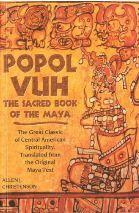While virtually visiting the Smithsonian’s National Museum of Asian Art, I stumbled upon the works of Tawaraya Sōtatsu (1600-1640). As a gift from Charles Lang Freer from the Freer Gallery of Art given to the Smithsonian, Sōtatsu’s Waves at Matsushima, painted in Japan in the early 1600s, is a painting that depicts the blessings of the sea while also inspiring artists of his time. The folding screen is also one of Japan's most distinctive forms of art, seen in this painting. Screens such as this were traditionally displayed as a backdrop for special occasions and ceremonies. It is speculated that this painting was commissioned by the merchant Tani Shōan to celebrate the opening of the Zen temple Shōunji.
Although there are over 70 works created by Sōtatsu, much of the artist’s personal life is unknown. Living in Kyoto, Japan, Sōtatsu had a studio called Tawaraya, where he made and sold fan paintings to an audience of aristocratic and imperial patronage. His recognizable works of abstract designs and vibrant colors, with the use of wet pigment to create random patterns, would later become known as the Rinpa style. A style that would come to influence modern Japanese art. However, if it wasn't for the efforts of Charles Lang Freer with the discovery of Sōtatsu’s works over 200 years after their creation, then Sōtatsu’s paintings would not have received the attention and recognition they deserved.
The journal article "Japanese Calligraphy and Painting," by Steven D. Owyoung and Elizabeth Horton, describes why Sōtatsu's work was so important. His combining of traditional themes of Japanese scroll painting with bold, decorative designs would go on to influence others. For example, his use of gold and silver would be shown through the works of Ogata Kōrin, a Japanese artist of the Tokugawa period, famous for his screen paintings, textile designs, and lacquerwork. The article also talks about how he created a decorative style known as Rinpa as it states, “Rinpa, the great decorative style of the Edo period, was developed by the extraordinary masters of design Tawaraya Sōtatsu (seventeenth century)...” (Owyoung 3). He pioneered techniques that would later go on to influence a majority. It again states, “Rinpa’s influence continued into contemporary times, and is often found in modern Japanese Nihonga painting… has expressed the native artistic spirit of modern Japan… relates closely to Japan's cultural past through its themes, materials, and styles” (Owyoung 3). Although he and his works were forgotten for centuries, they still lived on in others, such as his contemporary Hon'ami Kōetsu, and into the next generation of painters such as Ogata Kōrin.
Sōtatsu's works are beautiful. To me, the colors and the techniques that he uses come together to create masterpieces. The Smithsonian virtual museum tour was a way to look at works of art with the comfort of being in your own home. I have never gone to an actual museum, but this virtual tour allows me to experience art in the safety of my coronavirus-free house. Although this is a great and safe way to look at art, I still would like to go to an actual museum because then it would be better to see fine details, textures, and dimensions up close. With that being said, more information on Waves at Matsushima can be found in this brief Youtube video:
Works Cited:
Owyoung, Steven D., and Elizabeth Horton. “JAPANESE CALLIGRAPHY AND PAINTING.” Bulletin (St. Louis Art Museum), vol. 19, no. 3, 1989, pp. 1–35. JSTOR, www.jstor.org/stable/40716256. Accessed 28 Mar. 2021.
“Sōtatsu: Making Waves.” Freer Gallery of Art & Arthur M. Sackler Gallery, 25 Mar. 2020, asia.si.edu/exhibition/sotatsu-making-waves/.





